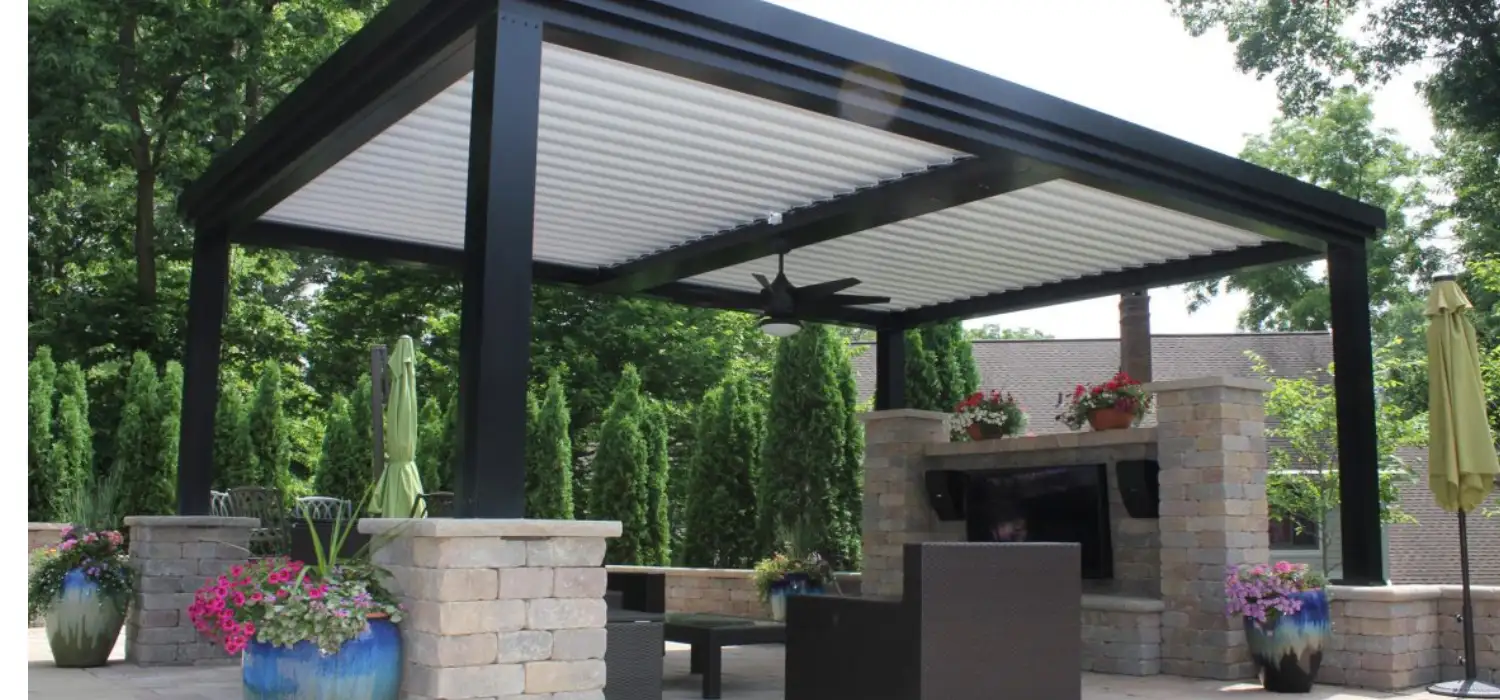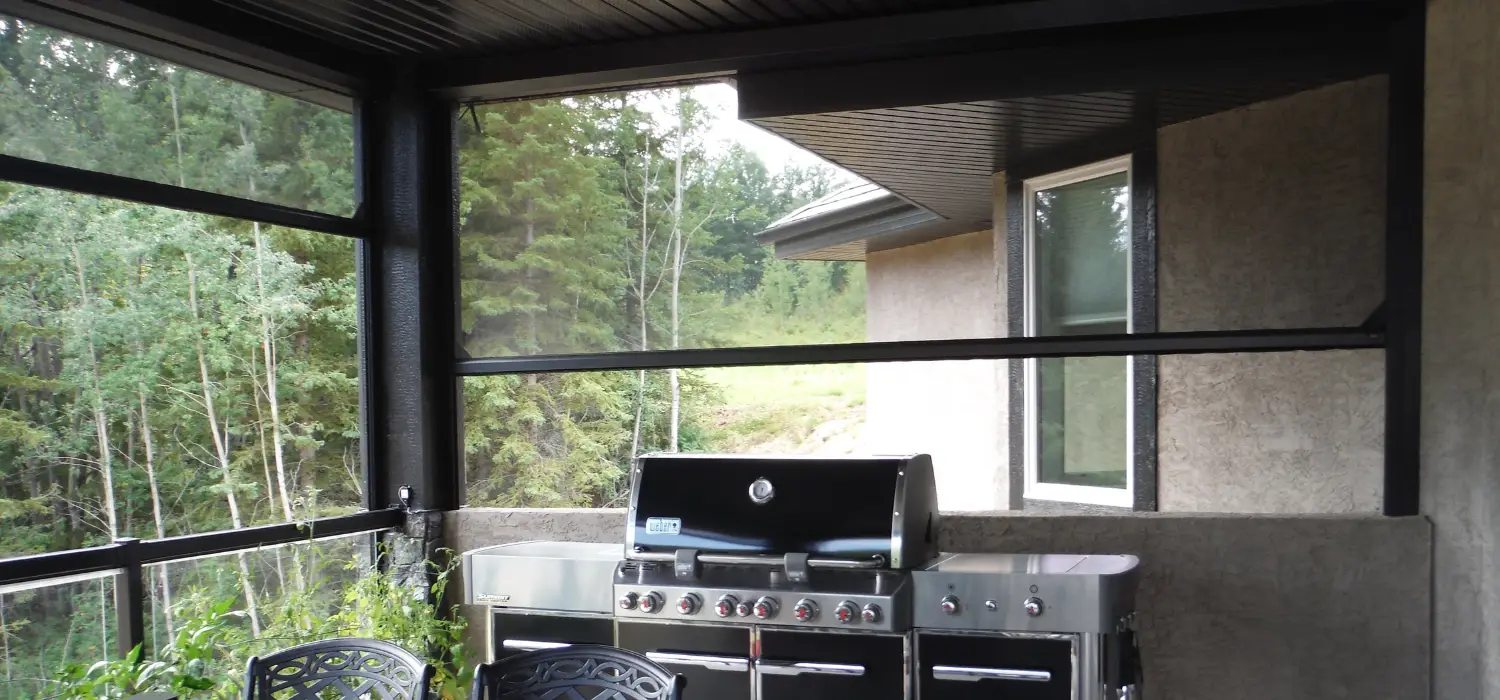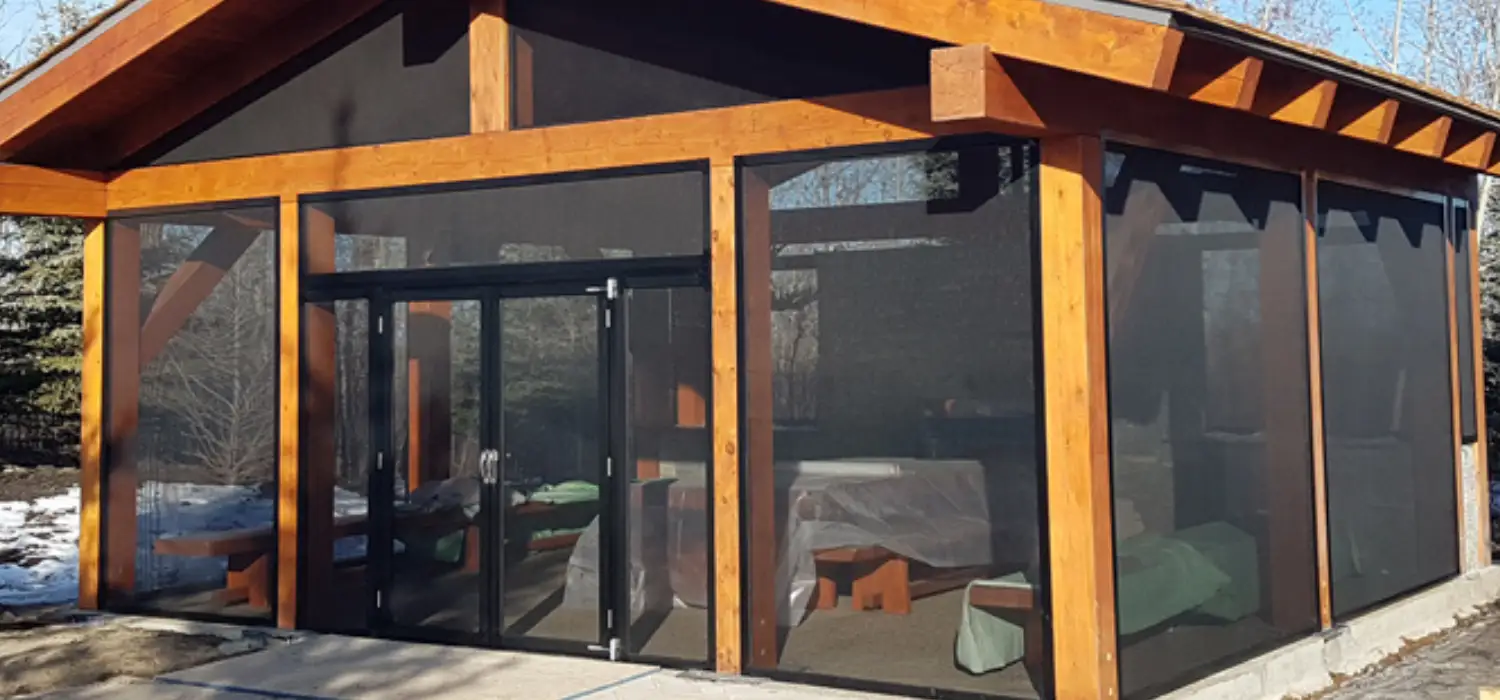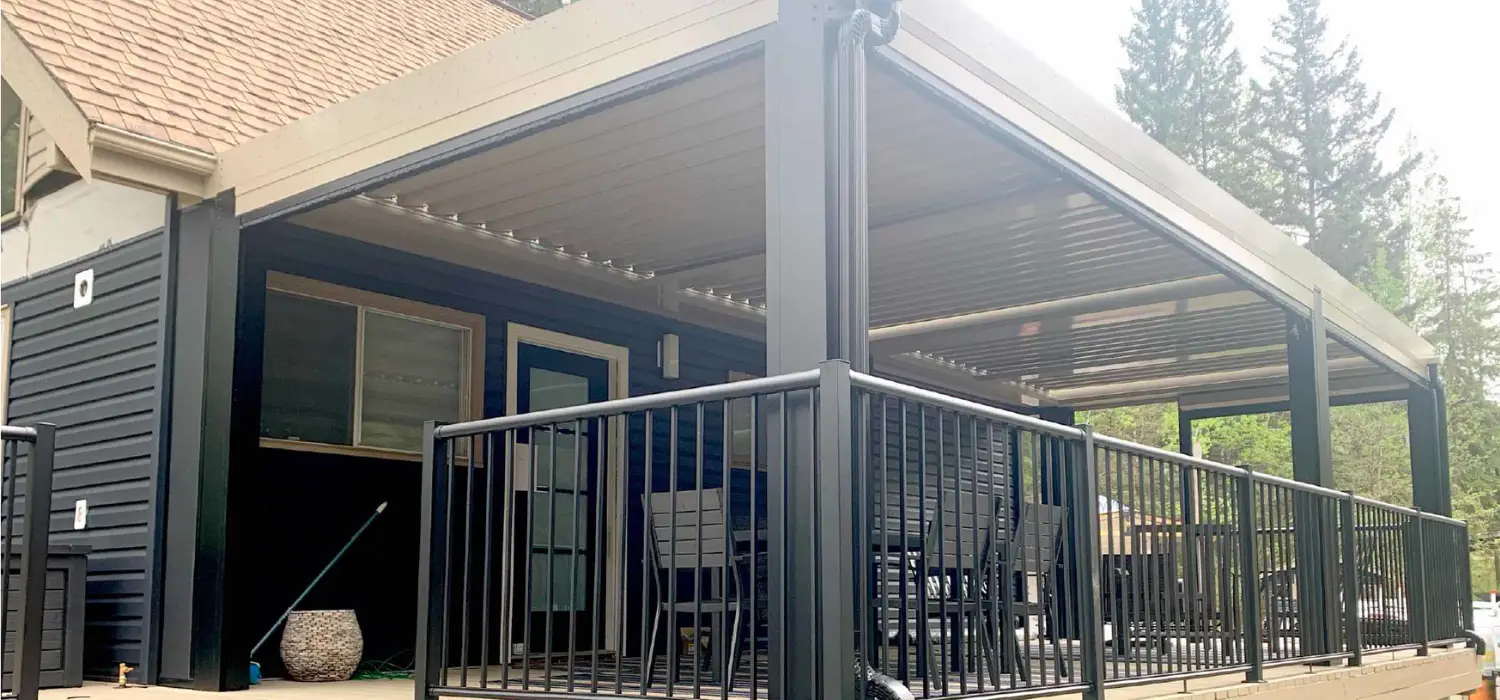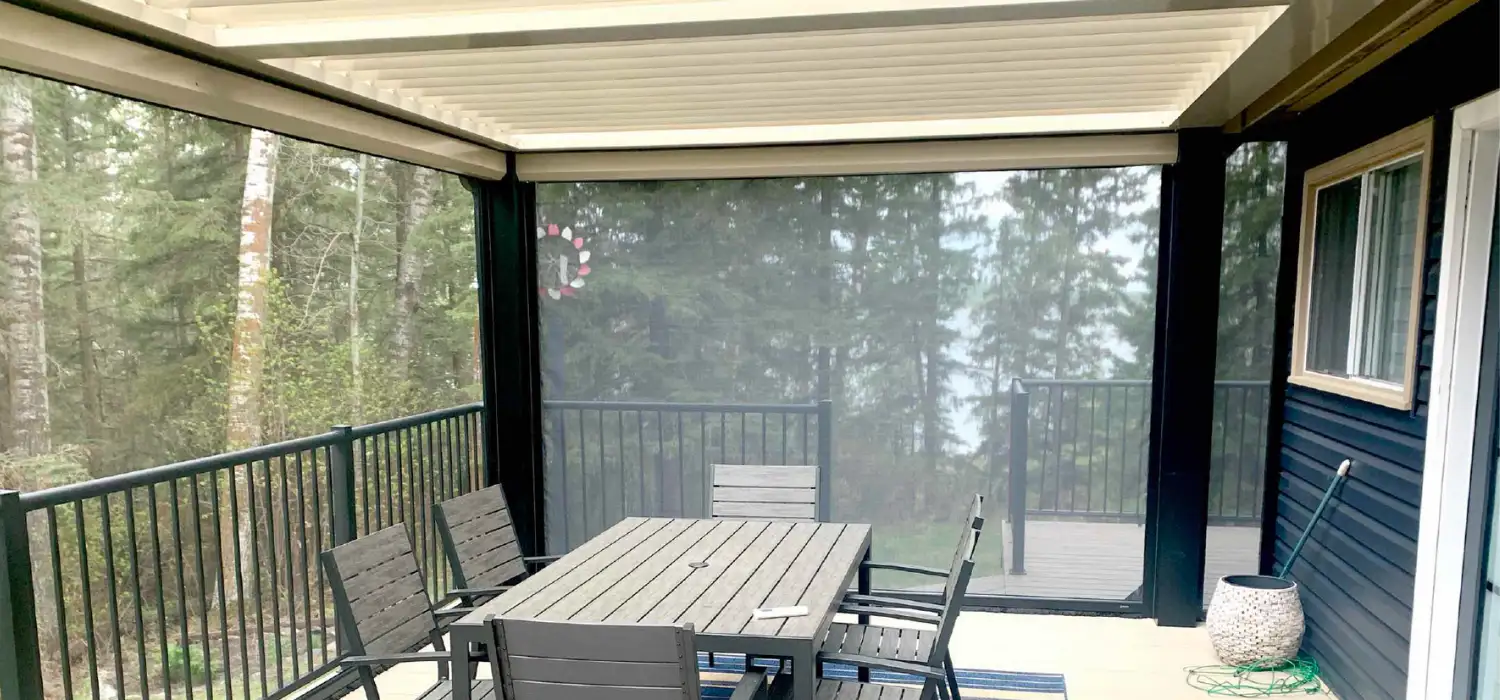To build a louvered roof in Edmonton, you will typically need the following:
- Professional Advice: Start by working with a professional architect or designer to develop a detailed design and construction plans for your louvered roof. The design should consider factors such as the size, shape, materials, and desired functionality of the roof based on the space that is available. It also needs to abide by development and building codes for the area.
- Construction Materials: Determine the materials needed for the construction of the louvered roof. This may include structural elements such aluminum or steel posts, beams, and rafters, as well as the louvers themselves. Choose materials that are durable, weather-resistant, and suitable for your specific design requirements.
- Tools & Equipment: Depending on the complexity of the project, you or your contractor may need various tools and equipment for the construction. This can include power tools such as drills, saws, and welding equipment, as well as basic hand tools like hammers, screwdrivers, and measuring tools.
- Solid Structure: Depending on the size and weight of the louvered roof structure, you may need to construct a foundation or piles to support the weight and provide stability. The type and size of the foundation will depend on local building codes and soil conditions. For example: Because of the deep frost line here in Edmonton, Solaris recommends that the piles be 10 feet deep.
- Professional Installation: The installation process will involve assembling the structural elements, including posts, beams, and rafters, according to the design plans. The louvers will need to be installed in a way that allows for adjustable positioning and movement. This may involve attaching the louvers to the framework and incorporating a motorized or manual control mechanism for adjusting the louver angles.
- Permits and Zoning: As mentioned earlier, you may need to obtain the necessary permits and approvals before starting the construction of your louvered roof. This typically includes submitting the design plans, paying fees, and scheduling inspections at different stages of the construction process to ensure compliance with local building codes and regulations.
It’s important to consult with local authorities and professionals experienced in louvered roof construction like Solaris Edmonton to ensure compliance with local building codes, safety standards, and any specific requirements in your area. Hiring a reputable contractor or working with a specialized louvered roof provider can help ensure a smooth construction process and a high-quality end result.
